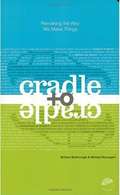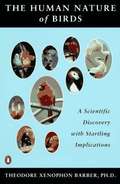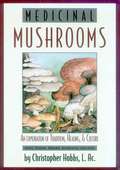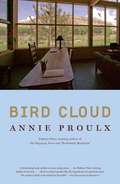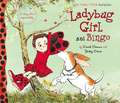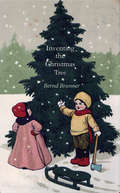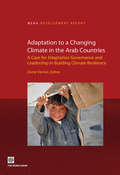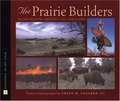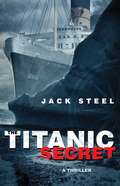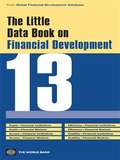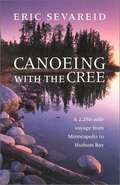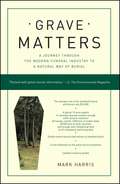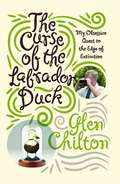- Table View
- List View
Observing the Solar System
by Gerald NorthWritten by a well-known and experienced amateur astronomer, this is a practical primer for all aspiring observers of the planets and other Solar System objects. Whether you are a beginner or more advanced astronomer, you will find all you need in this book to help develop your knowledge and skills and move on to the next level of observing. This up-to-date, self-contained guide provides a detailed and wide-ranging background to Solar System astronomy, along with extensive practical advice and resources. Topics covered include: traditional visual observing techniques using telescopes and ancillary equipment; how to go about imaging astronomical bodies; how to conduct measurements and research of scientifically useful quality; the latest observing and imaging techniques. Whether your interests lie in observing aurorae, meteors, the Sun, the Moon, asteroids, comets, or any of the major planets, you will find all you need here to help you get started.
The Vegetation of Antarctica through Geological Time
by David J. Cantrill Imogen PooleThe fossil history of plant life in Antarctica is central to our understanding of the evolution of vegetation through geological time and also plays a key role in reconstructing past configurations of the continents and associated climatic conditions. This book provides the only detailed overview of the development of Antarctic vegetation from the Devonian period to the present day, presenting Earth scientists with valuable insights into the break up of the ancient supercontinent of Gondwana. Details of specific floras and ecosystems are provided within the context of changing geological, geographical and environmental conditions, alongside comparisons with contemporaneous and modern ecosystems. The authors demonstrate how palaeobotany contributes to our understanding of the palaeoenvironmental changes in the southern hemisphere during this period of Earth history. The book is a complete and up-to-date reference for researchers and students in Antarctic palaeobotany and terrestrial palaeoecology.
Cradle To Cradle: Remaking The Way We Make Things
by William Mcdonough Michael BraungartA manifesto for a radically different philosophy and practice of manufacture and environmentalism "Reduce, reuse, recycle" urge environmentalists; in other words, do more with less in order to minimize damage. As William McDonough and Michael Braungart argue in their provocative, visionary book, however, this approach perpetuates a one-way, "cradle to grave" manufacturing model that dates to the Industrial Revolution and casts off as much as 90 percent of the materials it uses as waste, much of it toxic. Why not challenge the notion that human industry must inevitably damage the natural world, they ask. In fact, why not take nature itself as our model? A tree produces thousands of blossoms in order to create another tree, yet we do not consider its abundance wasteful but safe, beautiful, and highly effective; hence, "waste equals food" is the first principle the book sets forth. Products might be designed so that, after their useful life, they provide nourishment for something new-either as "biological nutrients" that safely re-enter the environment or as "technical nutrients" that circulate within closed-loop industrial cycles, without being "downcycled" into low-grade uses (as most "recyclables" now are). Elaborating their principles from experience (re)designing everything from carpeting to corporate campuses, the authors make an exciting and viable case for change.
The Human Nature of Birds: A Scientific Discovery with Startling Implications
by Theodore X. BarberA provocative new study of birds, humans, and the deepest prejudices of Western science--developed from six years of independent research by a behavioral scientist. In the spirit of the New York Times bestseller The Hidden Life of Dogs. Color photos.
Medicinal Mushrooms: An Exploration of Tradition, Healing and Culture
by Christopher HobbsMedicinal Mushrooms is a modern handbook for exploring and understanding the rich traditions of healing fungi in Eastern and Western cultures. Author Christopher Hobbs thoroughly documents and details the nutritional and health benefits of over 100 species of edible fungi. Here is the most complete work on the cultural, health-promoting, and medicinal uses of mushrooms ever published!
Bird Cloud
by Annie Proulx"Bird Cloud" is the name Annie Proulx gave to 640 acres of Wyoming wetlands and prairie and four-hundred-foot cliffs plunging down to the North Platte River. On the day she first visited, a cloud in the shape of a bird hung in the evening sky. Proulx also saw pelicans, bald eagles, golden eagles, great blue herons, ravens, scores of bluebirds, harriers, kestrels, elk, deer and a dozen antelope. She fell in love with the land, then owned by the Nature Conservancy, and she knew what she wanted to build on it--a house in harmony with her work, her appetites and her character, a library surrounded by bedrooms and a kitchen. Proulx's first work of nonfiction in more than twenty years, Bird Cloud is the story of designing and constructing that house--with its solar panels, Japanese soak tub, concrete floor and elk horn handles on kitchen cabinets. It is also an enthralling natural history and archaeology of the region--inhabited for millennia by Ute, Arapaho and Shoshone Indians-- and a family history, going back to nineteenth-century Mississippi riverboat captains and Canadian settlers. Proulx, a writer with extraordinary powers of observation and compassion, here turns her lens on herself. We understand how she came to be living in a house surrounded by wilderness, with shelves for thousands of books and long worktables on which to heap manuscripts, research materials and maps, and how she came to be one of the great American writers of her time. Bird Cloud is magnificent.
Ladybug Girl and Bingo
by Jacky DavisLulu and Bingo are best friends! Whenever they play outside, Bingo always stays close by Lulu's side. When they go camping for the very first time, Lulu does her best to be responsible, and hold on tight to Bingo's leash. But what happens when Bingo wants to explore the forest on his own and runs off? This is a job for Ladybug girl! Picture descriptions present.
Inventing the Christmas Tree
by Bernd Brunner Benjamin A. SmithA colorfully decorated Christmas tree, lit with twinkling lights, provokes awe and delight. We understand the lighted tree as a central symbol of the Christmas season, but what are the roots of the tradition? Who first thought to bedeck a tree, to bring it inside? How and where did the local activity grow into a widespread tradition, and how has the Christmas tree traveled across time and continents? Bernd Brunner's brief history--enriched by a selection of delightful and unusual historical illustrations--spans many centuries and cultures to illuminate the mysteries of the Christmas tree and its enduring hold on the human imagination. Tracing various European traditions from the Middle Ages forward, Brunner finds that only in the nineteenth century did Christmas trees become common in European family homes. In North America, the imported custom soon fascinated, though some found the tree not quite compatible with a Puritan mindset. Brunner explores how the Christmas tree entered mainstream American culture and how in recent times it has become globally popular. He introduces Jacqueline Kennedy's Nutcracker Tree in the White House, trees used to celebrate the New Year in Turkey, and the world's most expensive Christmas tree, erected in Abu Dhabi. The author also considers the place of the artificial tree and the ecological dimensions of the Christmas tree trade. A book rich with anecdote and insight, Inventing the Christmas Tree will enchant a wide audience.
Community Forestry
by Ryan C. L. Bullock Kevin S. HannaProviding a critical and incisive examination of community forestry, this is a detailed study of complex issues in local forest governance, community sustainability and grassroots environmentalism. It explores community forestry as an alternative form of local collaborative governance in globally significant developed forest regions, with examples ranging from the Gulf Islands of British Columbia to Scandinavia. Responding to the global trend in devolution of control over forest resources and the ever-increasing need for more sustainable approaches to forest governance, the book highlights both the possibilities and challenges associated with community forestry implementation. It features compelling case studies and accounts from those directly involved with community forestry efforts, providing unique insight into the underlying social processes, issues, events and perceptions. It will equip students, researchers and practitioners with a deep understanding of both the evolution and management of community forestry in a pan-national context.
Adaptation to a Changing Climate in the Arab Countries: A Case for Adaptation Governance and Leadership in Building Climate Resilience
by Dorte VernerIn the Arab countries, climate change is a risk to poverty reduction and economic growth, threatening to unravel many of the development gains that have been achieved. The Arab Region is already suffering adverse consequences from climate variability and change. This book provides information on climate change and its impact in the Arab Region, as well as technical guidance on climate adaptation options for policy makers. The areas addressed include the economic impacts of climate change (as measured by the reduction in household income and GDP); the impacts of climate change on the water, health, and tourism sectors; livelihoods and well-being in rural and urban areas; biodiversity; disaster risk management; as well as gender and other social relations. The report is written through a participatory and collaborative process, led by the World Bank in partnership with the League of Arab States, incorporating both regional and international experts on the topics.
The Prairie Builders: Reconstructing America's Lost Grasslands
by Sneed B. CollardBarely a century ago a vast tallgrass prairie covered America's heartland. Bison, elk, coyotes, and bear roamed this wilderness. Hundreds of species of prairie plants supported an explosion of birds and insects, including hundreds of kinds of butterflies. By the early part of the twentieth century, however, the tallgrass prairie was gone, its rich soils converted to farms to feed a growing world population. Here, author Sneed B. Collard III tells the remarkable story of an effort to bring back part of the native tallgrass prairie. By following scientists who are working on the 8,000-acre Neal Smith National Wildlife Refuge in Iowa, readers will learn where the vision for a new prairie came from and how a dedicated group of scientists and volunteers is working to turn this vision into reality, from locating seeds of native prairie plants to using fire to drive out weeds to "bringing home" bison, elk, and one of the prairie's most spectacular butterflies, the Regal Fritillary.
The Titanic Secret
by Jack SteelPublished to coincide with the 100th anniversary of the sinking of the Titanic A covert operation with catastrophic global consequences collides with fate in this ingeniously inventive novel of conspiracy, subterfuge, and murder unfurling against a factual, tragic, and heart-stopping moment in history. THE TITANIC SECRET April 1912: Shortly after midnight on Wilhelmstrasse in Berlin, mere yards from the British Embassy, an English spy is shot after a clandestine meeting with a German government official. He utters three cryptic words to a sentry, then dies. It's an ambush as calculated and cold-blooded as the scheme it helps set in motion. For Gunther Voss, a tyrannical German financier who has amassed a fortune in mining, it's the biggest gamble he has ever undertaken: commit America to joining forces with Germany against Great Britain, destroy an empire, and secure for himself the invaluable South African mining concessions currently controlled by the British. It would make the formidable Voss, already a figure of both fear and admiration in America, one of the wealthiest and most powerful men in the world. Even as devious, self-seeking, and unthinkable as the plan is, with an alliance as strong as America and Germany, it's more than possible--it's inevitable. It has fallen on the unique talents of Alex Tremayne of Britain's Secret Service Bureau and beautiful Maria Weston, a pioneering, fearless, and experienced American agent currently working in Britain, to stop Voss dead in his tracks. Traveling undercover as man and wife, their mission is to neutralize Voss's plan before he reaches the States. And they'll be tracking Voss's every move on the eventful transatlantic journey in unparalleled luxury, occupying a first class suite on board the Titanic, on her heralded maiden voyage from Southampton to the Port of New York. But Tremayne and Weston are unprepared for the explosive plays of fate that await them, as well as their prey, over the next few nights of their doomed journey. For the ever-shifting dedication to duty and the choices between life and death will become more immediate, more intimate, more demanding, and far more treacherous than they could ever have imagined.
The Little Data Book on Financial Development
by The World BankThe Little Data Book on Financial Development 2013 is a pocket edition of the Global Financial Development Database, published as part of the work on the Global Financial Development Report 2013: Rethinking the Role of the State in Finance. It contains 38 indicators of financial development in 205 economies, including measures of (1) financial depth, (2) access, (3) efficiency, and (4) stability of financial institutions and markets. Additional variables, historical observations, and links to underlying research are available at www. worldbank. org/financialdevelopment.
A Short Introduction to Climate Change
by Tony EggletonA Short Introduction to Climate Change provides a clear, balanced and well documented account of one of the most important issues of our time. It covers developments in climate science over the past 250 years and shows that recent climate change is more than the result of natural variability. It explains the difference between weather and climate by examining changes in temperature, rainfall, Arctic ice and ocean currents. It also considers the consequences of our use of fossil fuels and discusses some of the ways to reduce further global warming. Tony Eggleton avoids the use of scientific jargon to provide a reader-friendly explanation of the science of climate change. Concise but comprehensive, and richly illustrated with a wealth of full-colour figures and photographs, A Short Introduction to Climate Change is essential reading for anyone who has an interest in climate science and in the future of our planet.
The Management of Insects in Recreation and Tourism
by Raynald Harvey LemelinInsects such as cockroaches, mosquitoes and bed-bugs are usually not highly sought amongst travellers or recreationists, yet each year, collectors, butterfly enthusiasts, dragonfly-hunters and apiarists collect, visit, document and raise insects for recreational purposes. Illustrating a range of human-insect encounters from an interdisciplinary perspective, this book provides the first insight into the booming industry of insect recreation. Case studies and examples demonstrate the appeal of insects, ranging from the captivating beauty of butterflies to the curious fascination of locust swarms, and challenge the notion that animals lacking anthropomorphic features hold little or no interest for humans. Throughout the book, the emphasis is on the innovators, the educators, the dedicated researchers and activists who, through collaboration across fields ranging from entomology to sociology and anthropology, have brought insects from the recreational fringes to the forefront of many conservation and leisure initiatives.
Climate Change
by Jonathan CowieThe second edition of this acclaimed text has been fully updated and substantially expanded to include the considerable developments (since publication of the first edition) in our understanding of the science of climate change, its impacts on biological and human systems, and developments in climate policy. Written in an accessible style, it provides a broad review of past, present and likely future climate change from the viewpoints of biology, ecology, human ecology and Earth system science. It will again prove to be invaluable to a wide range of readers, from students in the life sciences who need a brief overview of the basics of climate science, to atmospheric science, geography, geoscience and environmental science students who need to understand the biological and human ecological implications of climate change. It is also a valuable reference text for those involved in environmental monitoring, conservation and policy-making.
Canoeing with the Cree
by Eric SevareidIn 1930 two novice paddlers--Eric Sevareid and Walter C. Port--launched a secondhand 18-foot canvas canoe into the Minnesota River at Fort Snelling for an ambitious summer-long journey from Minneapolis to Hudson Bay. Without benefit of radio, motor, or good maps, the teenagers made their way over 2,250 miles of rivers, lakes, and difficult portages. Nearly four months later, after shooting hundreds of sets of rapids and surviving exceedingly bad conditions and even worse advice, the ragged, hungry adventurers arrived in York Factory on Hudson Bay--with winter freeze-up on their heels. First published in 1935, Canoeing with the Cree is Sevareid's classic account of this youthful odyssey. The newspaper stories that Sevareid wrote on this trip launched his distinguished journalism career, which included more than a decade as a television correspondent and commentator on the CBS Evening News.
Soil (Rocks and Minerals)
by Melissa StewartHave you ever wondered how soil is different from dirt, or where soil comes from? Do you know the different animals and organisms that live in soil? What are the many ways that we use soil? Read Soil to find the answers to these questions and many more. You'll also find a hands-on activity to try at home or at school, as well as a glossary of unfamiliar words, resources to help you locate additional information, and a useful index.
Grave Matters
by Mark HarrisBy the time Nate Fisher was laid to rest in a woodland grave sans coffin in the final season of Six Feet Under, Americans all across the country were starting to look outside the box when death came calling. Grave Matters follows families who found in "green" burial a more natural, more economic, and ultimately more meaningful alternative to the tired and toxic send-off on offer at the local funeral parlor. Eschewing chemical embalming and fancy caskets, elaborate and costly funerals, they have embraced a range of natural options, new and old, that are redefining a better American way of death. Environmental journalist Mark Harris examines this new green burial underground, leading you into natural cemeteries and domestic graveyards, taking you aboard boats from which ashes and memorial "reef balls" are cast into the sea. He follows a family that conducts a home funeral, one that delivers a loved one to the crematory, and another that hires a carpenter to build a pine coffin. In the morbidly fascinating tradition of Stiff, Grave Matters details the embalming process and the environmental aftermath of the standard funeral. Harris also traces the history of burial in America, from frontier cemeteries to the billion-dollar business it is today, reporting on real families who opted for more simple, natural returns. For readers who want to follow the examples of these families and, literally, give back from the grave, appendices detail everything you need to know, from exact costs and laws to natural burial providers and their contact information.
The Curse of the Labrador Duck
by Glen ChiltonIn an obsessive 82,000-mile quest for dead birds, how much trouble can one scientist get into? Finally, the world's leading authority on the extinct Labrador Duck, Dr. Glen Chilton, shares the story of his frenzied obsession to reveal the histories behind the mysterious bird -- a saga wherein he sets out to examine the remains of every Labrador Duck, conduct genetic analysis on every Labrador Duck egg, and visit every site where the duck was shot...with many a (mis)adventure along the way. More elusive than the Passenger Pigeon, the Dodo, or the Great Auk and breeding in places so obscure that no certain records exist of its nests, the Labrador Duck succumbed to extinction almost before anyone realized it was in decline. When Chilton began his travels, there were thought to be approximately fifty stuffed specimens, scattered among the museums of Europe and North America. However, as his search progressed, it became clear that some specimens had been lost to war and theft, while others lay hidden in far-flung collections, overseen by secretive curators. After traveling the equivalent of 3.3 times around the world with a series of oddball companions, Chilton finally began to close in on every known specimen...but not before he risked heavy-metal poisoning in Russia, swam naked in a glacier-fed stream, corresponded with a millionaire murderer, and narrowly avoided arrest in New York City. A magnificent blend of travel writing, science, detective work, and mishap, The Curse of the Labrador Duck is the zany adventure of one biologist's obsessive quest to uncover the mysteries of one of the world's most enigmatic birds.
Land Use and the Carbon Cycle
by Daniel G. Brown Derek T. Robinson Nancy H. F. French Bradley C. ReedAs governments and institutions work to ameliorate the effects of anthropogenic CO2 emissions on global climate, there is an increasing need to understand how land-use and land-cover change is coupled to the carbon cycle, and how land management can be used to mitigate their effects. This book brings an interdisciplinary team of fifty-eight international researchers to share their novel approaches, concepts, theories and knowledge on land use and the carbon cycle. It discusses contemporary theories and approaches combined with state-of-the-art technologies. The central theme is that land use and land management are tightly integrated with the carbon cycle and it is necessary to study these processes as a single natural-human system to improve carbon accounting and mitigate climate change. The book is an invaluable resource for advanced students, researchers, land-use planners and policy makers in natural resources, geography, forestry, agricultural science, ecology, atmospheric science and environmental economics.
Green Governance
by David Bollier Burns H. WestonThe vast majority of the world's scientists agree: we have reached a point in history where we are in grave danger of destroying Earth's life-sustaining capacity. But our attempts to protect natural ecosystems are increasingly ineffective because our very conception of the problem is limited; we treat "the environment" as its own separate realm, taking for granted prevailing but outmoded conceptions of economics, national sovereignty, and international law. Green Governance is a direct response to the mounting calls for a paradigm shift in the way humans relate to the natural environment. It opens the door to a new set of solutions by proposing a compelling new synthesis of environmental protection based on broader notions of economics and human rights and on commons-based governance. Going beyond speculative abstractions, the book proposes a new architecture of environmental law and public policy that is as practical as it is theoretically sound.
Floods in a Changing Climate
by P. P. Mujumdar D. Nagesh KumarVarious modeling methodologies are available to aid planning and operational decision making: this book synthesises these, with an emphasis on methodologies applicable in data scarce regions, such as developing countries. Problems included in each chapter, and supported by links to available online data sets and modeling tools, engage the reader with practical applications of the models. Academic researchers in the fields of hydrology, climate change, and environmental science and hazards, and professionals and policy-makers working in hazard mitigation, remote sensing and hydrological engineering will find this an invaluable resource. This volume is the second in a collection of four books on flood disaster management theory and practice within the context of anthropogenic climate change. The others are: Floods in a Changing Climate: Extreme Precipitation by Ramesh Teegavarapu, Floods in a Changing Climate: Inundation Modelling by Giuliano Di Baldassarre and Floods in a Changing Climate: Risk Management by Slodoban Simonović.

